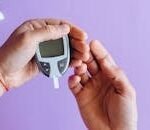Pharmacy Practice MCQ, in this article we will solve, Practice MCQ under subject physical pharmaceutics II. Read following article for your reference.
- Which physical factor can influence the chemical degradation of pharmaceutical products?
- A. Temperature
- B. Concentration of reactants
- C. Presence of catalysts
- D. All of the above
- Which environmental factor commonly accelerates the degradation of pharmaceuticals?
- A. High humidity
- B. Low temperature
- C. Low pH
- D. Dark storage conditions
- Light exposure can cause degradation of pharmaceutical products through:
- A. Oxidation
- B. Reduction
- C. Hydrolysis
- D. Polymerization
- What type of reaction is most likely to occur when a pharmaceutical product is exposed to moisture?
- A. Hydrolysis
- B. Photolysis
- C. Oxidation
- D. Isomerization
- Which of the following is not a physical factor influencing the degradation of pharmaceuticals?
- A. Temperature
- B. Light
- C. Water activity
- D. pH
- Oxidation of pharmaceutical products is often catalyzed by:
- A. Acidic conditions
- B. Basic conditions
- C. Metal ions
- D. Low temperature
- Antioxidants are added to pharmaceuticals to:
- A. Enhance solubility
- B. Prevent microbial growth
- C. Prevent oxidation
- D. Increase bioavailability
- The presence of which element is most likely to cause oxidative degradation in pharmaceuticals?
- A. Nitrogen
- B. Carbon
- C. Oxygen
- D. Hydrogen
- Reduction reactions in pharmaceuticals can be caused by:
- A. Exposure to light
- B. Exposure to heat
- C. Presence of reducing agents
- D. High humidity
- Which of the following can act as a reducing agent in pharmaceutical formulations?
- A. Ascorbic acid
- B. Hydrogen peroxide
- C. Ozone
- D. Nitrogen dioxide
- Hydrolysis reactions in pharmaceuticals are typically accelerated by:
- A. Acidic conditions
- B. Basic conditions
- C. Both A and B
- D. Neither A nor B
- Which functional group is most susceptible to hydrolysis?
- A. Ester
- B. Amine
- C. Ketone
- D. Alcohol
- Buffer solutions in pharmaceuticals are used to:
- A. Prevent hydrolysis
- B. Enhance hydrolysis
- C. Increase solubility
- D. Improve taste
- Hydrolysis of an ester group in pharmaceuticals produces:
- A. An alcohol and a carboxylic acid
- B. An amine and a ketone
- C. A ketone and an alcohol
- D. A carboxylic acid and an amine
- Which condition does not promote hydrolysis in pharmaceutical products?
- A. High temperature
- B. Low humidity
- C. Acidic environment
- D. Basic environment
- The stability of a pharmaceutical product is generally:
- A. Independent of pH
- B. Dependent on pH
- C. Enhanced by low pH
- D. Enhanced by high pH
- Solubility of a pharmaceutical product in aqueous solutions is influenced by:
- A. pH
- B. Temperature
- C. Ionic strength
- D. All of the above
- Which pharmaceutical degradation is specifically influenced by pH changes?
- A. Photolysis
- B. Oxidation
- C. Hydrolysis
- D. Adsorption
- The degradation of a weakly acidic drug is most rapid at:
- A. Very low pH
- B. Very high pH
- C. Neutral pH
- D. pH has no effect
- Buffer solutions are used in pharmaceutical formulations to:
- A. Change the pH
- B. Maintain a constant pH
- C. Increase degradation rate
- D. Decrease solubility
- Which storage condition minimizes chemical degradation of pharmaceuticals?
- A. High temperature and high humidity
- B. Low temperature and low humidity
- C. High temperature and low humidity
- D. Low temperature and high humidity
- Which of the following can cause photodegradation in pharmaceuticals?
- A. Exposure to UV light
- B. Storage in dark containers
- C. Exposure to infrared light
- D. Low temperature
- Pharmaceutical products are often stored in amber-colored bottles to prevent:
- A. Thermal degradation
- B. Photodegradation
- C. Oxidative degradation
- D. Hydrolytic degradation
- Stability testing of pharmaceuticals typically includes exposure to:
- A. Light
- B. Heat
- C. Humidity
- D. All of the above
- Refrigeration of pharmaceuticals is primarily used to:
- A. Increase solubility
- B. Enhance bioavailability
- C. Slow down degradation
- D. Improve taste
- The primary purpose of adding preservatives to pharmaceutical products is to:
- A. Enhance stability
- B. Improve taste
- C. Prevent microbial growth
- D. Increase solubility
- Which of the following is not a common method to enhance the stability of pharmaceutical products?
- A. Adding antioxidants
- B. Using buffer solutions
- C. Increasing storage temperature
- D. Using amber-colored containers
- Shelf life of a pharmaceutical product refers to:
- A. The time it takes for the product to be manufactured
- B. The time period in which the product remains effective
- C. The duration of the product’s usage
- D. The time required for the product to degrade completely
- Chemical preservatives are added to pharmaceutical products to:
- A. Enhance the pharmacological effect
- B. Extend the product’s shelf life
- C. Improve the color of the product
- D. Decrease the solubility of the product
- Which factor does not affect the chemical stability of pharmaceuticals?
- A. Storage temperature
- B. Dosage form
- C. Relative humidity
- D. Packaging material
For more regular updates you can visit our social media accounts,
Instagram: Follow us
Facebook: Follow us
WhatsApp: Join us
Telegram: Join us






